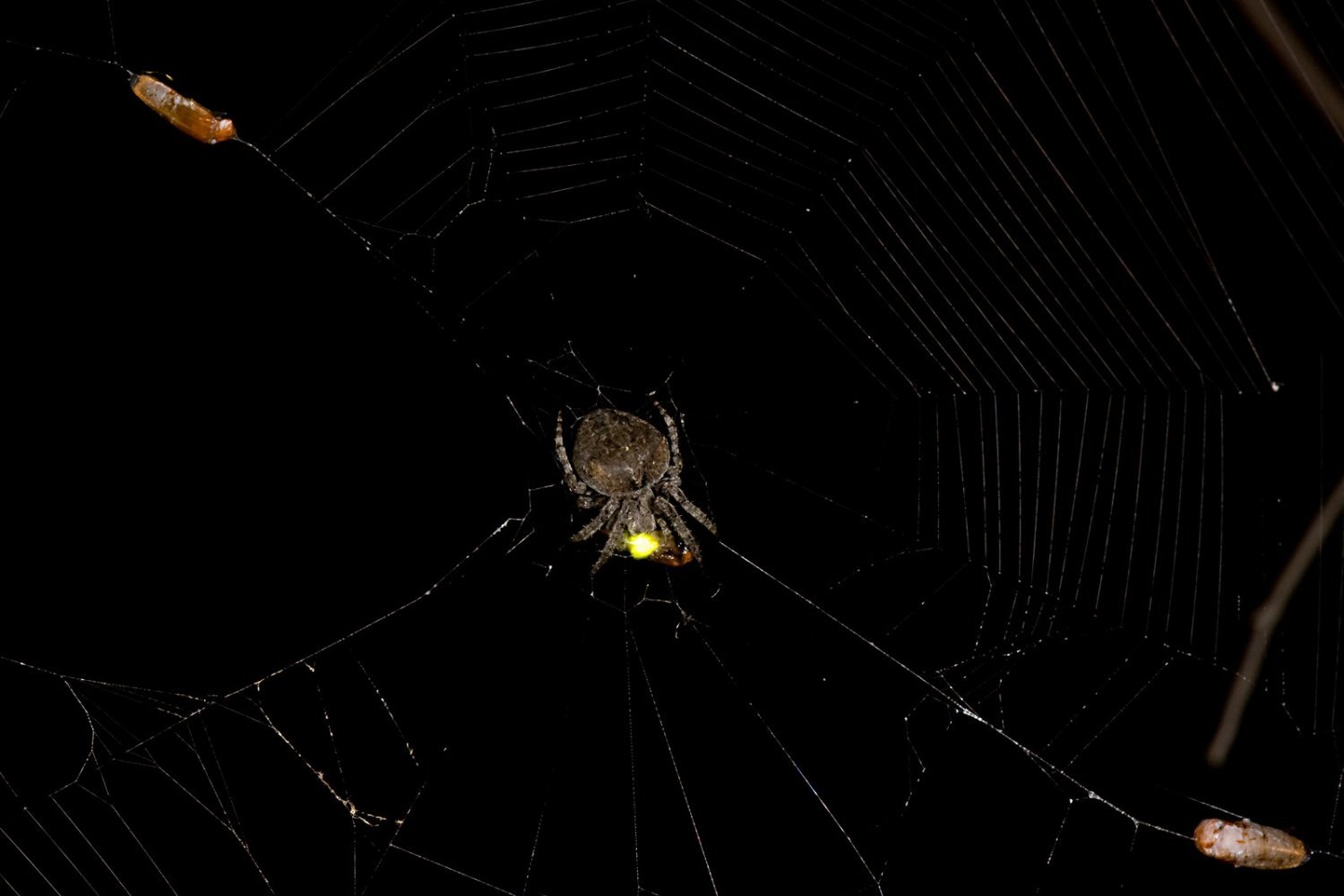The orb-weaving spider Araneus ventricosus employs a cunning hunting strategy involving the manipulation of firefly light signals, according to new research. These spiders, common in East Asia, appear to force captured male fireflies to emit signals that attract other males seeking mates, effectively turning their prey into living lures. This remarkable discovery sheds light on the complex predatory tactics employed in the natural world.
A Deceptive Dinner Date
Scientists from Huazhong Agricultural University and Hubei University in China initiated this study after observing a peculiar pattern: Araneus ventricosus spiders seemed to capture a disproportionate number of male Abscondita terminalis fireflies. This particular firefly species has distinct mating signals. Males use a multi-pulse flash from two lanterns, while females use a single-pulse flash from a single lantern. The researchers suspected the spiders were exploiting these signals.
To investigate, field experiments were conducted. Webs containing captured male fireflies were observed. “The results showed a significant impact: in the presence of the spider, more male fireflies were ensnared in its web,” explained Daiqin Li, a behavioral ecologist at Hubei University. Furthermore, captured males in these webs often emitted female-like, single-lantern flashes. These findings, published in Current Biology, strongly suggest the spiders manipulate their prey to attract more victims.
How Does the Trick Work?
The researchers found that the spiders, despite their poor eyesight, seem to recognize male fireflies based on their light patterns. Upon capture, the spiders repeatedly bite the male fireflies. To confirm the role of light in this behavior, the team blackened the lanterns of some fireflies with ink. Spiders capturing these blackened fireflies exhibited less biting behavior, suggesting the light signals are crucial for triggering the manipulation.
Unraveling the Mystery
While the study provides compelling evidence of this manipulative hunting strategy, some questions remain unanswered. It’s still unknown whether the spider’s bite itself or a component of its venom triggers the altered light signals in the captured fireflies. Further research is needed to understand the precise mechanism behind this manipulation.
Future Research Directions
The evolutionary origins of this prey-manipulation strategy are also unclear. While many spiders prey on fireflies, this specific tactic appears unique to Araneus ventricosus. Investigating similar systems in other orb-weaving spiders and firefly predators could offer valuable insights. Additionally, exploring the possibility of spiders using other deceptive tactics, like sound or pheromones, to manipulate prey is a promising avenue for future research.
A Glimpse into Nature’s Intricacies
This discovery underscores the diverse and often astonishing strategies animals employ for survival. The spider’s ability to manipulate firefly light signals provides a fascinating example of the complex interplay between predator and prey in the natural world. Fortunately for us, these spiders seem content with targeting insects, leaving humans out of their deceptive dinner plans.











